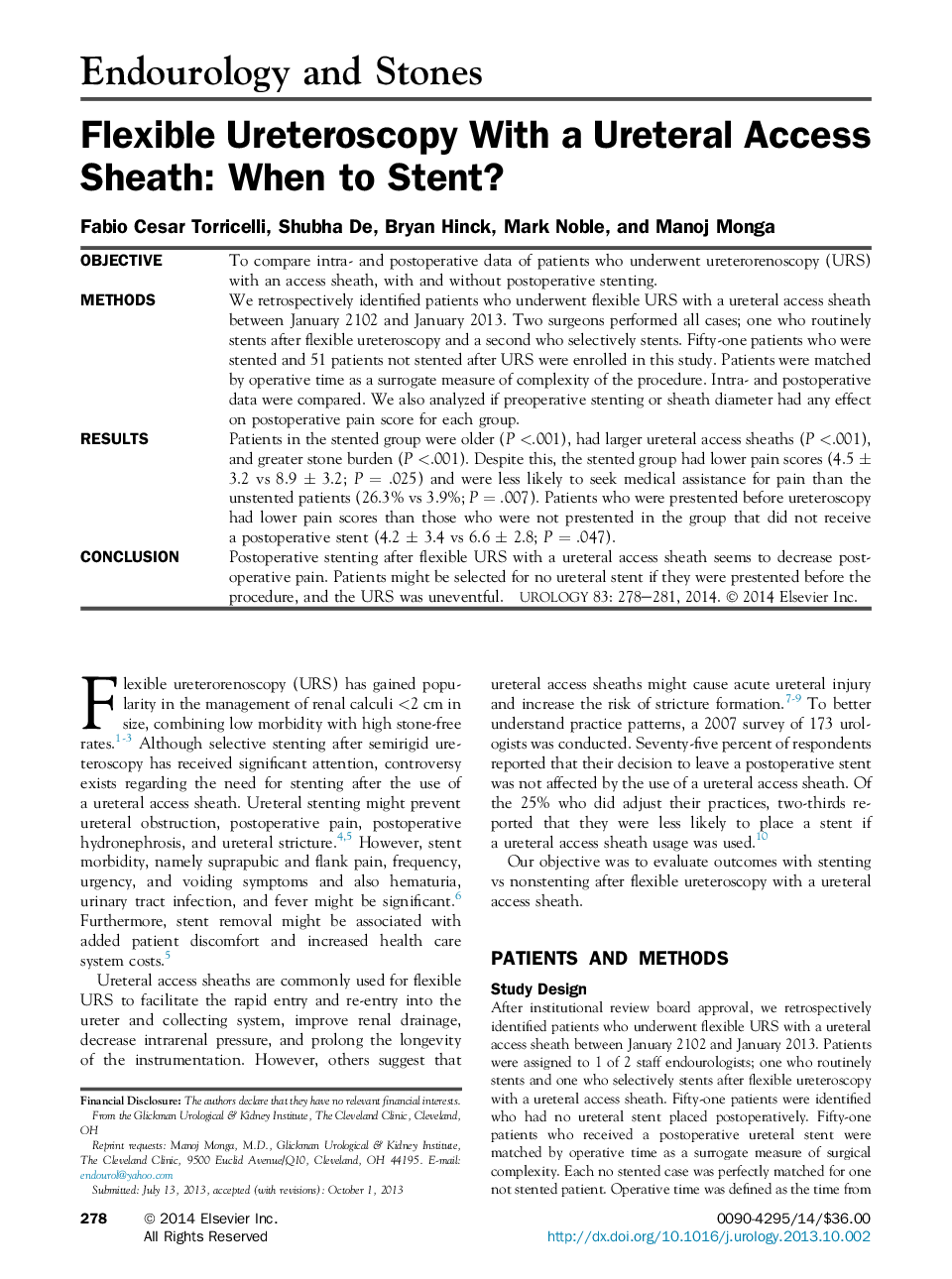| Article ID | Journal | Published Year | Pages | File Type |
|---|---|---|---|---|
| 3899372 | Urology | 2014 | 4 Pages |
ObjectiveTo compare intra- and postoperative data of patients who underwent ureterorenoscopy (URS) with an access sheath, with and without postoperative stenting.MethodsWe retrospectively identified patients who underwent flexible URS with a ureteral access sheath between January 2102 and January 2013. Two surgeons performed all cases; one who routinely stents after flexible ureteroscopy and a second who selectively stents. Fifty-one patients who were stented and 51 patients not stented after URS were enrolled in this study. Patients were matched by operative time as a surrogate measure of complexity of the procedure. Intra- and postoperative data were compared. We also analyzed if preoperative stenting or sheath diameter had any effect on postoperative pain score for each group.ResultsPatients in the stented group were older (P <.001), had larger ureteral access sheaths (P <.001), and greater stone burden (P <.001). Despite this, the stented group had lower pain scores (4.5 ± 3.2 vs 8.9 ± 3.2; P = .025) and were less likely to seek medical assistance for pain than the unstented patients (26.3% vs 3.9%; P = .007). Patients who were prestented before ureteroscopy had lower pain scores than those who were not prestented in the group that did not receive a postoperative stent (4.2 ± 3.4 vs 6.6 ± 2.8; P = .047).ConclusionPostoperative stenting after flexible URS with a ureteral access sheath seems to decrease postoperative pain. Patients might be selected for no ureteral stent if they were prestented before the procedure, and the URS was uneventful.
